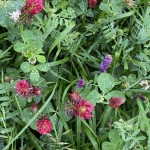Dramatic drop in pipfruit crop estimate
Hawke’s Bay’s expected crop down 15% on pre-season estimates.
Added 3 years ago
By Brenda Newth

Covid-19, labour shortages, and weather woes led industry organisation New Zealand Apples and Pears (NZAPI) to dramatically revise its crop forecast for the 2021-22 growing season, the most challenging in recent years.
Earlier this year, the 2022 apple and pear crop pre-season estimate was predicted to reach the equivalent of 23.2 million export boxes, but May’s reforecast has shaved 12% off that, and is now 20.3 million boxes.
NZAPI CEO Terry Meikle says a perfect storm of adverse weather events in key growing regions and major labour shortages during the heart of the harvest combined to result in growers not being able maximise their crops.
“Growers have not had the surety of labour to do everything they normally would to maximise their crops. Labour shortages were further exacerbated by the impacts of the pandemic affecting key regions at critical moments during the harvest and the backpacker workforce not being available. In this environment, maximising the crop volumes was simply not possible,” says Meikle.
Heavy rain in February and March has taken a toll, with Hawke’s Bay’s expected crop down 15% on pre-season estimates, and Gisborne even worse, down 20%. Gisborne had more than 530mm of rainfall during the season, and Hawke’s Bay 321mm.
Meikle says it has been “an incredibly difficult time” for growers to manage their orchards.
Further south, the Nelson growing season has been regarded as good, with the projected 7% decrease in the number of cartons produced being attributed to trees that were decimated by the hailstorms in the 2021 season not producing a crop this year. While the weather wasn’t a factor this season, port logistics and shipping disruptions and lack of containers have all impacted particularly heavily in the Nelson region.
Meikle says that ongoing disruptions in the global supply chain network and a global inflationary environment appear set to continue to create headwinds for the pipfruit industry in the coming months.
“While undoubtedly this has been the most challenging of harvests in recent years, the resilience of our grower community to produce quality fruit that gives our overseas and domestic customers a great eating experience is admirable.”
Join the conversation
Be the first to leave a comment.
Leave a comment
All comments are reviewed before they are published on the website. Your email address will not be published.




Family-Owned Farm Embraces Regenerative Agriculture to Grow and Educate


